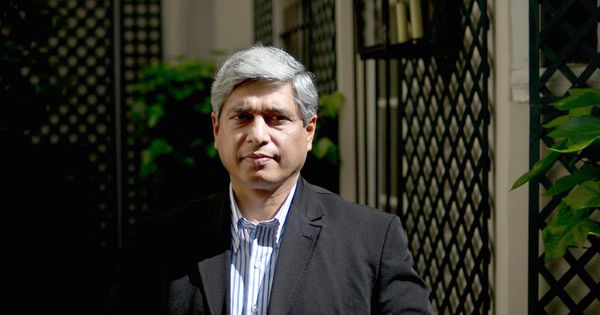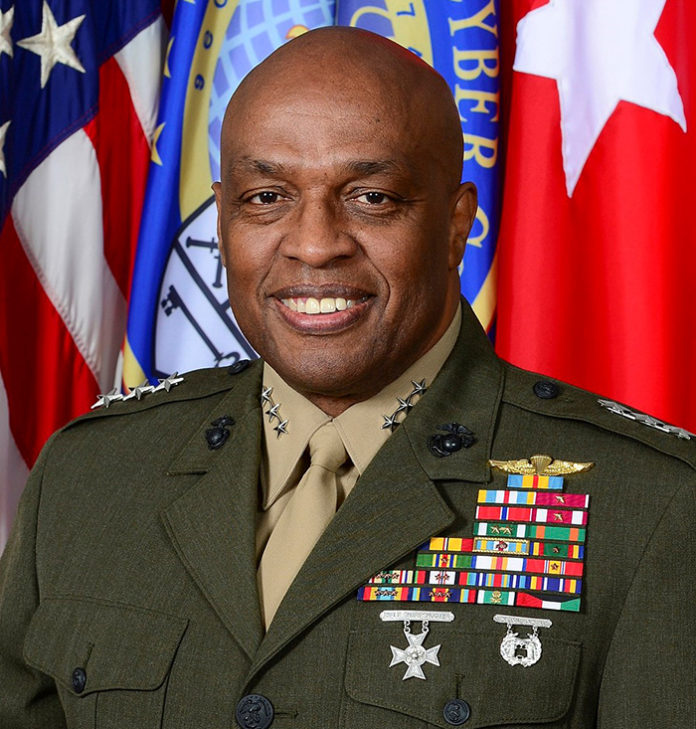The US Defence Intelligence Agency Director Lieutenant General Vincent R Stewart said in his recent testimony to the US Senate Armed Services Committee that Pakistan’s military operation Zarb-e-Azb and the Karachi operation have been successful in reducing violence in Pakistan: “Counter-insurgency operations along Pakistan’s Western border and paramilitary operations in Karachi have had successes in reducing violence and are likely to continue.” Zarb e-Azb has reduced militants’ ability to use Pakistan’s soil, however, Stewart has forecast that Pakistan will face internal security threats from militants and separatist groups in the current year. “Islamic State’s branch in Afghanistan-Pakistan and al Qaeda in the Indian subcontinent will remain significant security concerns for Islamabad,” he said.
Around 97 al Qaeda and Lashkar e-Jhangvi militants, including three commanders, were arrested in Karachi and a planned attack to break US journalist Daniel Pearl’s killer out of jail was foiled, Director General Inter-Service Public Relations (DGISPR) said on February 12. These men are accused of involvement in major attacks on two air bases, the Karachi airport, several regional intelligence headquarters and police installations between 2009 and 2015. “Our conclusion is that all of the terrorist groups are trying to cooperate with each other in order to carry out terrorist attacks,” he told a news conference. “Rangers carried out as many as 7,000 targeted operations in Karachi and 6,000 militants out of over 12,000 arrested by the military have been handed over to the police,” he said, adding the achievements of the Pakistan Army lie in successfully wiping out militant hideouts from the country especially those in FATA. He went on to say that the effects of Zarb-e-Azb were not limited to the country but the entire region. And that since the launch of military operations in the country, there has been significant respite in kidnappings, murders, snatching and other crimes which were at their peak before the start of the operation.
The US government has proposed US $860 million in aid for Pakistan during the 2016-17 fiscal year, including $265 million for military hardware in addition to counterinsurgency funds. “Our relationship with Pakistan is neither about any one system, nor any one capability. We go deeper than that,” said David McKeeby, of the State Department’s Bureau of Political-Military Affairs.
The State Department said that it was also meant for making progress to “disrupt, dismantle and defeat al Qaeda and its extremist allies ….Pakistan lies at the heart of the US counter-terrorism strategy, the peace process in Afghanistan, nuclear non-proliferation efforts, and economic integration in South and Central Asia,” state department’s explanatory note said about the amount earmarked for Pakistan under the overseas contingency operations (OCO) fund.
The US has agreed to extend military assistance to Pakistan for another year. Under the overseas operation. Contingency budget, Pakistan will get $40 million. OCO resources will support critical activities such as ensuring the safety of Pakistani nuclear installations, working with Pakistan to facilitate the peace process Afghanistan, and promoting improved relations with India. Under Pakistan counterinsurgency fund (PCF) Pakistan will get $15 million.
While citing Islamabad’s alleged relationship with a militant group known for targeting US trainee security forces in war-tom Afghanistan a senior US lawmaker has shown his intent to block Obama administration’s subsidised sale of eight new F-16 fighter jets to Pakistan. While spending tremendous amount of US dollars and certainly tremendous sacrifice in our men and women in uniform and by other agencies, they are working simultaneously to destabilise Afghanistan, “he added. Corker, however, suggested the Pakistani government should be welcome to purchase the advanced fighter jets with its own money. In his February 9 letter, written to the US secretary of state, Corker said: “I fully understand that our relationship with Pakistan is both complicated and imperfect. Cooperation with Pakistan is important and has achieved some of our interests.” But he said he was using his authority as a committee chairman to object single-handedly to the proposed sale. “Pakistan’s activities are problematic and contribute to the notion that it is a duplicitous partner, moving sideways rather than for ward in resolving regional challenges,” Corker added. Bob Corker has also notified the Obama administration that he would not approve using US funds to pay for the planes through the foreign military financing (FMF) programme. That means Pakistan must fund the purchase itself, instead of relying on US funds to cover about 46 per cent of the cost.
In the meanwhile, the US government declared on February 12 that it had approved the sale to Pakistan of up to eight F-16 fighter jets, radars, and other equipment in a deal valued at $699 million. A Pentagon spokesperson, Christopher Sherwood said, “Our bilateral defence relationship with Pakistan.is focused on enhancing counter-terrorism capabilities and improving the military’s ability to deny ungoverned spaces to terrorists that undermine stability in the region.” Pentagon said it had notified lawmakers about the possible deal. It said that F-16s would allow Pakistan’s Air Force to operate in all-weather environments and at night, while improving its self-defense capability and bolstering its ability to conduct counter-insurgency and counter-terrorism operations. Lawmakers have 30 days to block the sale, although such action is rare since such deals are well-vetted before any formal notification.

India said it was disappointed with the US decision. “We disagree with their rationale that such arms transfers help to combat terrorism …The US ambassador shall be summoned by the Ministry of External Affairs to convey our displeasure,” Vikas Swarup, spokesperson for India’s Foreign Ministry, said on Twitter. The demarche has since taken place. India has the dubious distinction of being Asia’s largest arms/munitions importer since 2007, and is undertaking well structured force modernization programmes at the projected cost of US$ 220 billion, spread over two decades. But as a matter of policy it acts as a spoiler whenever Pakistan acquires essential defence equipment for itself.
The Pentagon’s Defence Security Cooperation Agency, said the US administration was convinced that F-16s were the right· platform to support Pakistan’s counter-terrorism and counter-insurgency operations. “These operations reduce the ability of militants to use Pakistani territory as a safe haven for terrorism and a base of support for the insurgency in Afghanistan, which is in the national interests of both Pakistan and the United States, and in the interest of the region more broadly,” Agency’s official said.
India had done a yearlong hectic lobbying to block the sale of these eight F-16s. It had also recruited Pakistan’s former ambassador to the US-Husain Haqqani alongside some American lawmakers. Pakistan has gone a long way in augmenting international effort towards countering terrorism_ with in the country and in the region. Pakistan is actively participating in the efforts of quartet to kick start direct dialogue between the Afghan government and various factions of Taliban. There are significant structural and functional weaknesses in the ongoing transitions within Afghanistan, and there are predictions varying between total political collapse before end of this year to losing much of rural territories and some urban areas to Taliban control.
Pakistan needs to remain vigilant for handling various contingencies emanating out of potentially volatile Afghanistan. At the same time, the weaker nodes of National Action Plans need strengthening and professional application. Our domestic gains against terrorists are after over projected, but have always been found fragile and reversible-wanting in robustness and sustainability.





